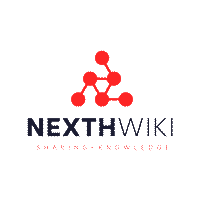Pink Open Market
Pink Open Market
The Pink Open Market, formerly known as OTC Pink or "Pink Sheets," is the most speculative tier of the three marketplaces for trading over-the-counter (OTC) stocks operated by the OTC Markets Group. It provides a platform for trading securities that are not listed on major exchanges like the NYSE or NASDAQ[2][3].
Key Features
- Low Barriers to Entry: The Pink Open Market has minimal financial standards and disclosure requirements for listed companies[2][3].
- Diverse Range of Securities: It includes stocks from smaller companies, foreign entities, and firms seeking less regulatory scrutiny[3].
- Electronic Trading: Trades are conducted electronically through broker-dealer networks[2].
- No SEC Registration Requirement: Companies in this market are not mandated to register their stock with the Securities and Exchange Commission (SEC)[3].
Company Categories
The Pink Open Market categorizes companies based on the quantity and timeliness of information they share with investors:
- Pink Current: Companies that submit regular Quarterly and Annual Reports[5].
- Pink Limited: Companies that have submitted information no older than six months[5].
- Expert Market: Companies unwilling or unable to provide disclosure to the public markets (formerly known as Pink No Information)[5].
Here is a MediaWiki page about the requirements for the Pink Open Market:
Requirements for Pink Open Market
The Pink Open Market, formerly known as OTC Pink or "Pink Sheets," is the most speculative tier of the three marketplaces for trading over-the-counter (OTC) stocks operated by the OTC Markets Group. Here are the key requirements and guidelines for companies to be listed on the Pink Open Market.
Listing Requirements
The Pink Open Market has minimal listing requirements compared to other OTC markets or major stock exchanges. The primary requirement is the submission of financial information:
- **Form 211 Submission:** Companies must submit electronic Form 211, provided by the Financial Industry Regulatory Authority (FINRA), typically done by a market maker on behalf of the company. This form requires current financial information about the company[1].
Disclosure Requirements
Companies listed on the Pink Open Market must adhere to specific disclosure guidelines to provide transparency to investors:
- **Quarterly and Annual Financials:** Companies must publish quarterly and annual financial statements. These reports do not need to be audited but must be prepared according to U.S. GAAP or International Financial Reporting Standards (IFRS)[1][2].
- **OTC Disclosure & News Service:** Companies must subscribe to the OTC Disclosure & News Service to make their filings publicly available. This includes posting quarterly and annual reports, as well as any material news or information promptly[2][4].
- **Rule 15c2-11 Compliance:** Broker-dealers and other market makers are prohibited from publishing quotations for stocks that do not provide publicly available financial information, as per the amendment to Rule 15c2-11 introduced in 2020[1].
Categories of Companies
Companies on the Pink Open Market are categorized based on the level of information they provide:
- **Pink Current Information:** Companies that provide regular quarterly and annual reports.
- **Pink Limited Information:** Companies that submit information at least every six months but do not meet the full disclosure guidelines.
- **Pink No Information:** Companies that provide no public disclosure or have outdated information older than six months. These companies are considered very high risk[2][3].
Risks and Considerations
Investing in the Pink Open Market carries substantial risks due to:
- **Limited Financial Information:** Companies may not provide comprehensive financial data.
- **High Volatility:** Stocks in this market can be highly volatile.
- **Low Liquidity:** Many securities have low trading volumes.
- **Potential for Fraud:** The lack of stringent regulatory oversight can lead to fraudulent activities.
Recent Developments
The regulatory structure of the Pink Open Market has evolved to increase transparency:
- **Removal of "Dark Securities":** Securities with no public financial information have been moved to the Expert Market, which is accessible only to broker-dealers and professional investors[1].
- **Enhanced Disclosure Rules:** New rules introduced in 2020 require more consistent and timely financial disclosures from companies to remain in the Pink market[1].
Conclusion
The Pink Open Market provides a platform for trading a diverse range of securities with minimal regulatory requirements. However, due to its speculative nature and lower regulatory oversight, it is generally suitable for sophisticated investors with a high risk tolerance.
Citations:
- https://www.investopedia.com/articles/fundamental-analysis/08/pink-sheets-ottcb.asp
- https://www.michaelbest.com/portalresource/OTC-Markets-Guide_Michael-Best-Securities-Team
- https://www.investopedia.com/terms/o/otc-pink.asp
- https://www.otcmarkets.com/files/OTCPinkGuidelines.docx
- https://www.otcmarkets.com/financialReportViewer?id=229396&symbol=SDRC
Risks and Considerations
Investing in the Pink Open Market carries substantial risks due to:
- Limited financial information
- High volatility
- Low liquidity
- Potential for fraud or manipulation[3]
The OTC Markets Group uses warning labels to alert investors of potential risks:
- Caveat Emptor: (Skull and crossbones symbol) Indicates public interest concerns[2].
- Promotion Flag: Signifies awareness of current stock promotion related to the issuer[4].
Recent Developments
The regulatory structure of the Pink Open Market has evolved in recent years:
- Removal of "dark securities" from the market to increase transparency[3].
- Introduction of new disclosure rules in 2020 to enhance market transparency[2].
- Shift of "No Information" securities to the Expert Market, accessible only to broker-dealers and professional investors[2].
Conclusion
The Pink Open Market provides trading opportunities for a wide range of securities not available on major exchanges. However, due to its speculative nature and lower regulatory oversight, it is generally considered suitable only for sophisticated investors with a high risk tolerance[3].
